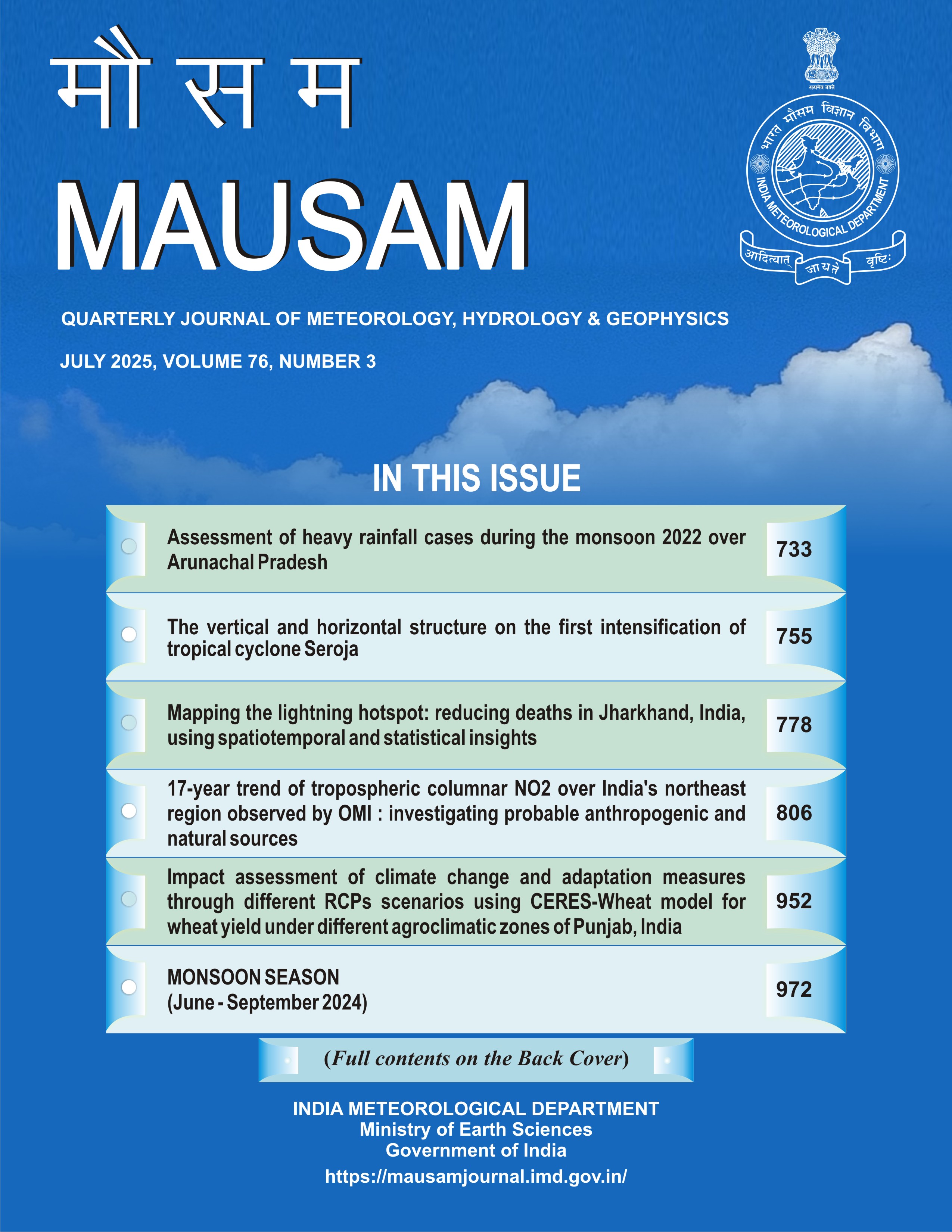Mapping the lightning hotspot: reducing deaths in Jharkhand, India, using spatiotemporal and statistical insights
DOI:
https://doi.org/10.54302/mausam.v76i3.6763Abstract
This research investigates the spatial and temporal variations of lightning flashes, specifically in-tra-clouds (IC), negative cloud-to-ground (NCG) and positive cloud-to-ground (PCG) strikes, across the state of Jharkhand, India. Actual georeferenced lightning data (IC, NCG, and PCG) were collected from the Indian Institute of Tropical Meteorology's (IITM) Lightning Location Network (LLN) sensor deployed over the Indian subcontinent during 2019–2023. Corresponding the Department of Home, Jail, and Disaster Management, Govt. of Jharkhand, provided lightning-related casualty data for the studied periods. Jharkhand's diverse geography, encompassing hills, plateaus, and forests, creates favorable conditions for the development of thunderstorms and lightning strikes, particularly during the pre-monsoon (March to May) and monsoon seasons (June to September). These periods of moist air masses are marked by atmospheric instability, increasing the likelihood of lightning strikes. Rural areas, lacking adequate lightning protection systems and awareness of safety protocols, are especially vulnerable, posing risks to lives and property during thunderstorms. The study employs spatiotemporal statistical techniques, including interpolation methods, to analyze lightning data. Geospatial heat maps illustrate the spatial and temporal variability of lightning occurrences and associated casualties in Jharkhand's lightning hotspots. The research comprehensively examines seasonal lightning patterns, location-specific susceptibility, temporal hazards, and related meteorological factors.
Furthermore, the research proposes strategies to enhance disaster preparedness in Jharkhand, emphasizing the need for strengthened meteorological monitoring and early warning systems, particularly in remote areas. Public awareness campaigns targeted at vulnerable groups such as farmers and tribal communities are crucial to improving lightning safety knowledge and preparedness. Community resilience-building initiatives, including disaster management training and local involvement in emergency response planning, are recommended to mitigate the impacts of lightning strikes effectively.
Downloads
Published
How to Cite
Issue
Section
License
Copyright (c) 2025 MAUSAM

This work is licensed under a Creative Commons Attribution-NonCommercial 4.0 International License.
All articles published by MAUSAM are licensed under the Creative Commons Attribution 4.0 International License. This permits anyone.
Anyone is free:
- To Share - to copy, distribute and transmit the work
- To Remix - to adapt the work.
Under the following conditions:
- Share - copy and redistribute the material in any medium or format
- Adapt - remix, transform, and build upon the material for any purpose, even
commercially.



